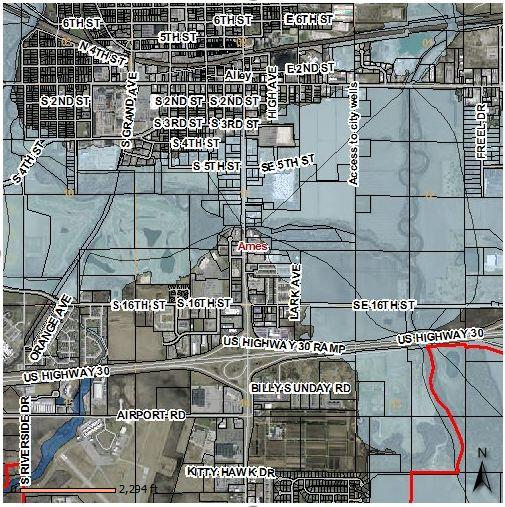Walmart, Target were built to combat Ames floods

City of Ames FEMA flood hazard zone
August 23, 2010
Additional planning measures helped businesses along Duff Avenue avoid damage in previous floods, but the August flooding was beyond what Ames city officials could control.
Jeff Benson, city planner, said a change in policy 10 years ago instructing businesses to have floor elevations of 3 feet above base flood elevation, rather than the previous policy of only 1 foot, helped during flooding in 2008.
“Projects elevated 3 feet stayed high and dry where others weren’t,” Benson said. “Target was built before 2008 but got water this time because [water] went higher.”
Parking lots are not subject to the same standards of elevation because occupied buildings do not rest in those spots. Many businesses that may have parking lots flood may not actually get water inside their stores. Target had damage to the southeast corner of its building, where its fitting rooms are.
Benson said businesses implemented their own defenses in planning as well. Happy Joe’s, which closed its doors for good after extensive flooding damage this month, had a retaining wall, Benson said.
The Walmart Supercenter, on its own initiative, installed a wetland area on the east side of its building to help filter storm water before it returns to the streams, Benson said. This was done in addition to city requirements to install filters to deal with storm water runoff.
“We need to protect the water down in the ground from anything getting down to it,” Benson said.
Benson said Walmart’s location and size meant the store couldn’t build in the conventional ways most stores in the area could. He noted that because the store is built not only on the floodplain, but in the floodway, where the city needs to keep room for water to flow freely, the southeast corner of the store “is sort of cut off.”
“They knew there was a possibility certain parts of [Walmart’s] lot would likely be submerged,” said Susan Gwiasda, public relations officer for the Ames City Manager’s office.
Gwiasda said Walmart built its lot with sloping in certain areas to prepare for potential flooding.
“Walmart went through a long process,” Gwiasda said. “Required to do additional landscaping to help slow any kind of flood [inundation].”
Benson said he was unsure what the next step would be, given that the events are so recent and the recovery is ongoing. He said cities must meet federal standards when it comes to flooding in order to be eligible for federal money for flood relief and prevention.
Gwiasda said that after the 1993 flooding, part of the process of recovery was a study done to determine how the city could be best prepared.
“I would assume we’ll look again at the area and see what options are out there,” Gwiasda said. “Things are different in 2010 than they were in 1993.”






